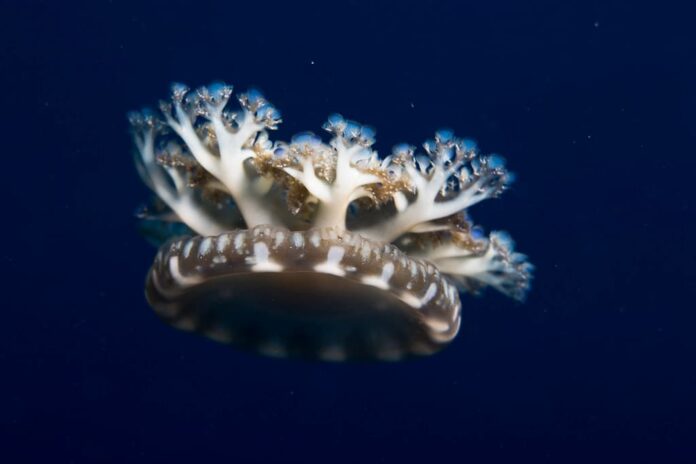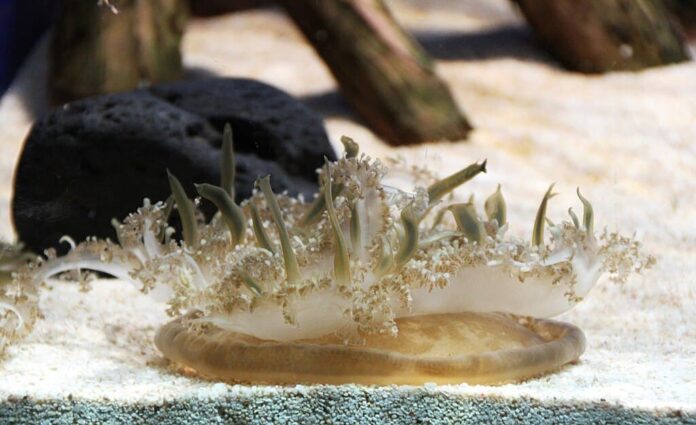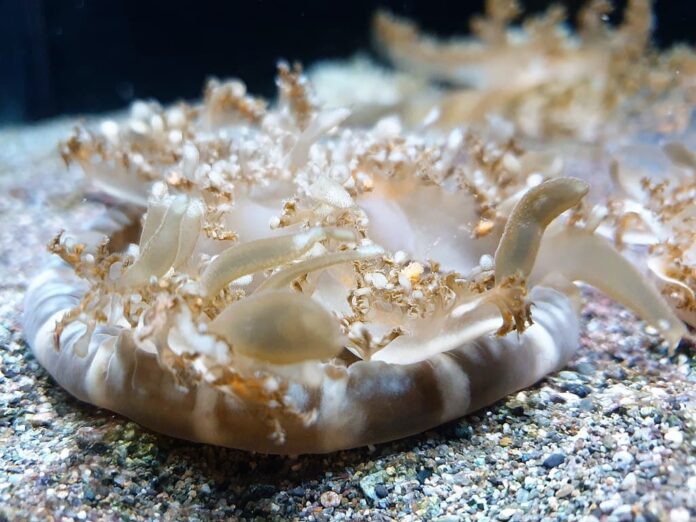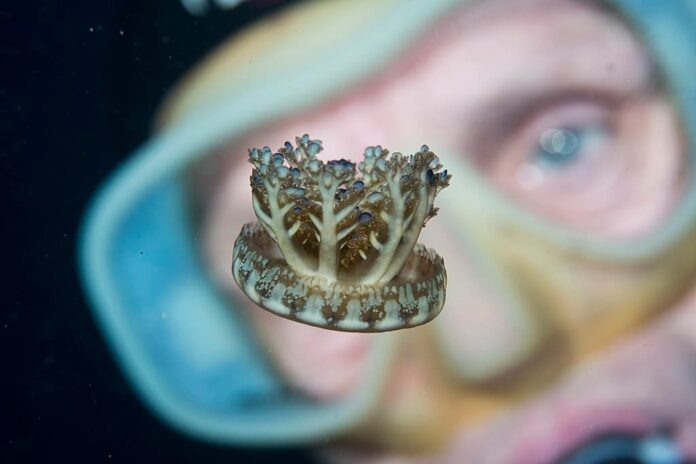While most jellyfish are normal, the upside down jellyfish has a very unusual habit. Why are they swimming upside down and waving their underparts up instead? We have talked about many regular jellyfish before, and I came across this peculiar one on the internet the other day. Not a lot of people know about them, and we shall do that now.
1Appearance

This jelly is around 30 centimeters wide and 25 centimeters high. An upside down jellyfish has a flattened bell that allows them to easily rest on sediment. The common coloration of this jelly is blue, gray, or green, and the color comes from photosynthetic algae called zooxanthellae. This algae lives inside the jellyfish’s tissue, and the jellyfish’s color is from that algae. They have 8 oral arms that extend upwards, and they are branched and splayed out when resting.
2Behavior

This jellyfish species develops a symbiotic relationship with photosynthetic dinoflagellates (marine plankton) called the zooxanthella. So they must lie upside down in areas with sufficient light penetration to provide an energy source to the zooxanthellae. In return, the zooxanthellae that lives in the jellyfish’s arms will provide it with up to 90% of its nutritional needs. The habit of lying upside down earns them their common name upside down jellyfish. And just like other jelly out there, this one can also sting though the sting is mild. If they sting you, you may experience a red rash-like irritation which is very itchy.
Fun Fact: The upside down jellyfish is the first animal with no central nervous system to have been observed sleeping.
3Feeding & Habitats

As mentioned above, zooxanthellae already provide up to 90% of the jelly’s diet from the algae’s byproducts. The rest of the food for additional energy to grow is caught by the jellyfish itself, and those are zooplankton. An upside down jellyfish captures zooplankton by stunning them with its stinging cells before consuming them through mouths on their oral arms.
They live in warmer coastal regions around the world, especially the Caribbean, Indo-Pacific Ocean, and Micronesia. Their common habitats are in canals, estuaries, lakes, lagoons, mudflats, shallow mangrove swamps, and turtle grass flats. As for the medusa (the adult stage of a jellyfish), they live upside down on the seafloor in shallow areas.
Related Post: 7 Most Venomous Jellyfish




